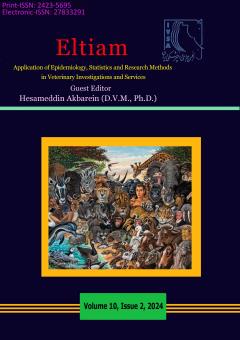The increase in population and the need to supply foodstuffs have raised the importance of animal health and veterinary activities more than ever before in the country's food security and development. In this paper, which focuses on veterinary activities in the field of
More
The increase in population and the need to supply foodstuffs have raised the importance of animal health and veterinary activities more than ever before in the country's food security and development. In this paper, which focuses on veterinary activities in the field of food-producing livestock, the concepts of need, supply, and demand are defined, and the methods of determining and prioritizing health needs in the livestock population of the country are presented. In the context of problems in setting priorities, there are also important points such as livestock population statistics, lack of human resources, rapid management changes, economic factors, management considerations, the traditional structure of animal husbandry, insufficient training of producers, and technical health officials of livestock farms, lack of inter-sectoral cooperation and necessary support. From the country's veterinary organization, the lack of sufficient information about diseases and animal health status in neighboring countries, especially Iraq and Afghanistan, and the weakness of border and interprovincial quarantine systems have been noted. Factors affecting the use of animal health services points such as access to services, feeling of need or demand, assurance of quality, price and cost of services and insurance coverage have been mentioned.
On the other hand, in recent decades, issues such as climate change, changes in international laws and regulations related to animal health and environment, transgenic products, bioterrorism, and drought, each of which affects the health and livestock production in some way, the need to pay attention to Proposes futures studies. Futures studies are a science that helps to better see these changes and prepare for them. The emergence of some new fields such as artificial intelligence, remote medicine and veterinary medicine (Telemedicine), personalized medicine and veterinary medicine, the emergence of robots in medicine and veterinary medicine, etc. paid attention. The sum of these issues should make us think about how much preparation there is for the future and these changes. It is suggested to make changes in the important fields of veterinary medicine such as education and research, veterinary structures at the national and international levels, and jobs related to veterinary medicine, in line with foresight and futurology.
Manuscript profile


